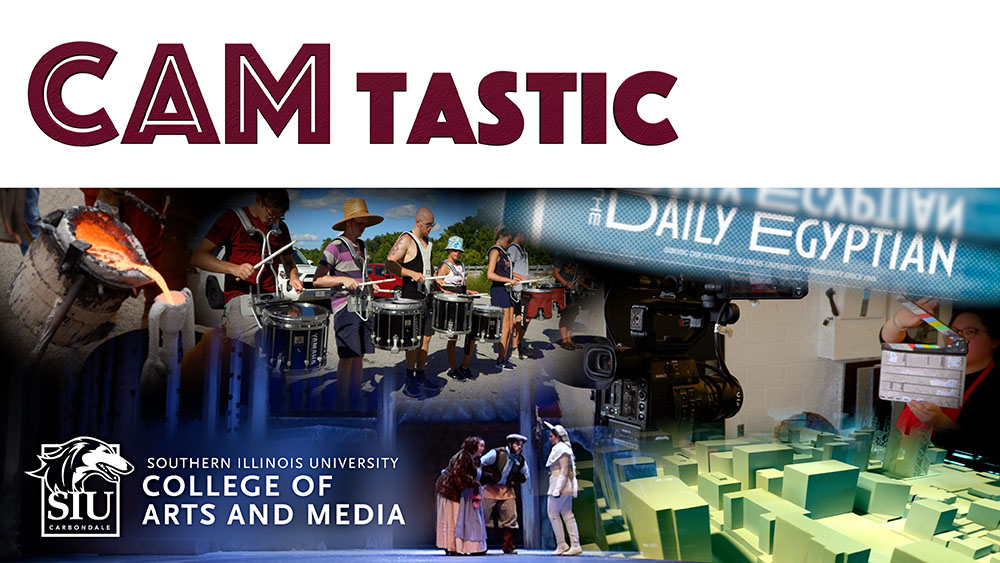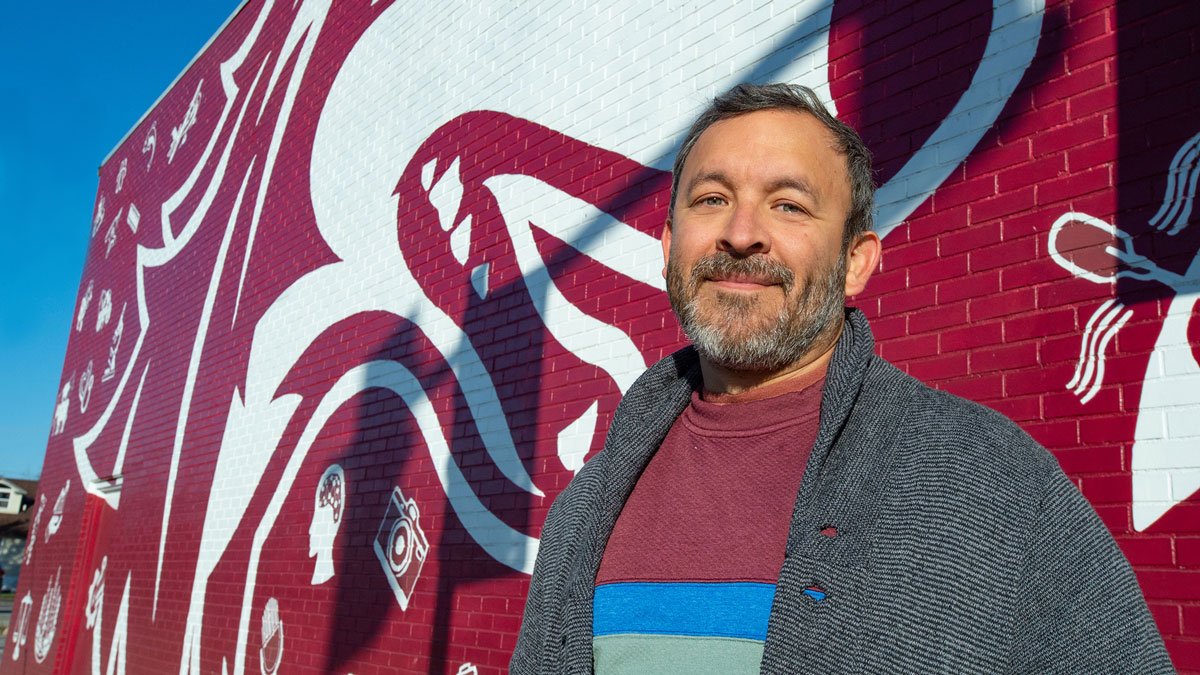CAMtastic Spring 2024 Newsletter
From the Dean: Our Inaugural Alumni Edition of CAMtastic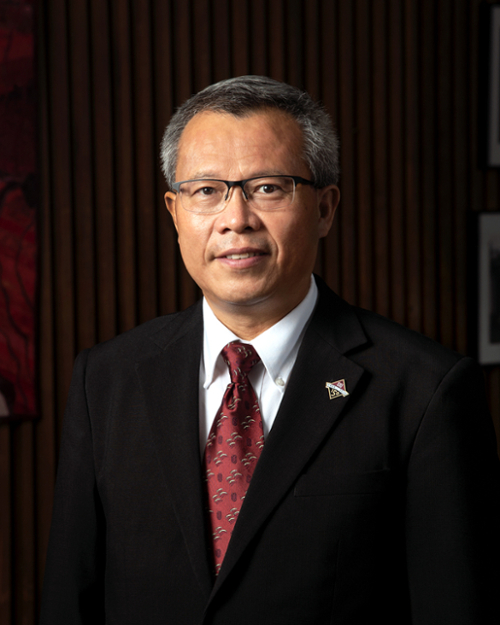
Dear CAM alumni and friends:
Greetings from the College of Arts and Media, a newly organized college at Southern Illinois University Carbondale. I am very happy and proud to tell you that our college has launched CAMtastic! This semiannual electronic newsletter for our alumni and friends is to help keep you informed of important happenings and major achievements in CAM.
CAM, as we fondly call it, is the creative hub on campus and in the region. Home for its six marvelous schools in Architecture, Art and Design, Journalism and Advertising, Media Arts, Music, and Theater and Dance, CAM boasts a variety of academic programs, from undergraduate to master’s, M.F.A. and Ph.D. All these schools and programs have one thing in common — creativity.
With nationally and internationally renowned faculty, brilliant and dedicated staff, talented and diligent students and loyal and supportive alumni and friends, CAM aspires to become a more mission-driven, more distinctive and more recognized national and international hub in arts and media education, research and creative activity. The college aims at fostering technically proficient, culturally competent and socially responsible arts and media professionals, scholars and leaders, who will thrive in the 21st-century global market and in the age of artificial intelligence.
In this inaugural issue of CAMtastic, you will get a brief glimpse of numerous amazing things happening in our CAM family. You are cordially invited to submit newsworthy items about you and other CAM alumni and friends to Mark Stoffel, CAM Communication Committee chair, via his email address at mstoffel@siu.edu.
I would like to take this opportunity to express my heartfelt thanks to Mark and the members of the CAM Communication Committee (Brenna Gallagher, Annie Hammock and Kevin Penrod) for making this publication possible.
Gifts from our alumni and friends help us provide the top-rate education our students need and deserve. Any amount makes a difference and is welcome. To learn more about giving, contact Lisa Knight, CAM director of development, at lisak@foundation.siu.edu.
Thank you for reading CAMtastic and for supporting our remarkable college and this much-needed CAM e-publication. Please take care, stay healthy and keep in touch. I wish you and your loved ones a happy, healthy and splendid new year ahead.
Go Dawgs and CAM!
Hong Cheng, Ph.D.
Dean and Professor
College of Arts and Media
Southern Illinois University Carbondale
Photojournalism Tenure-track Assistant Professor’s Work Appears in Prestigious Publications Around the Globe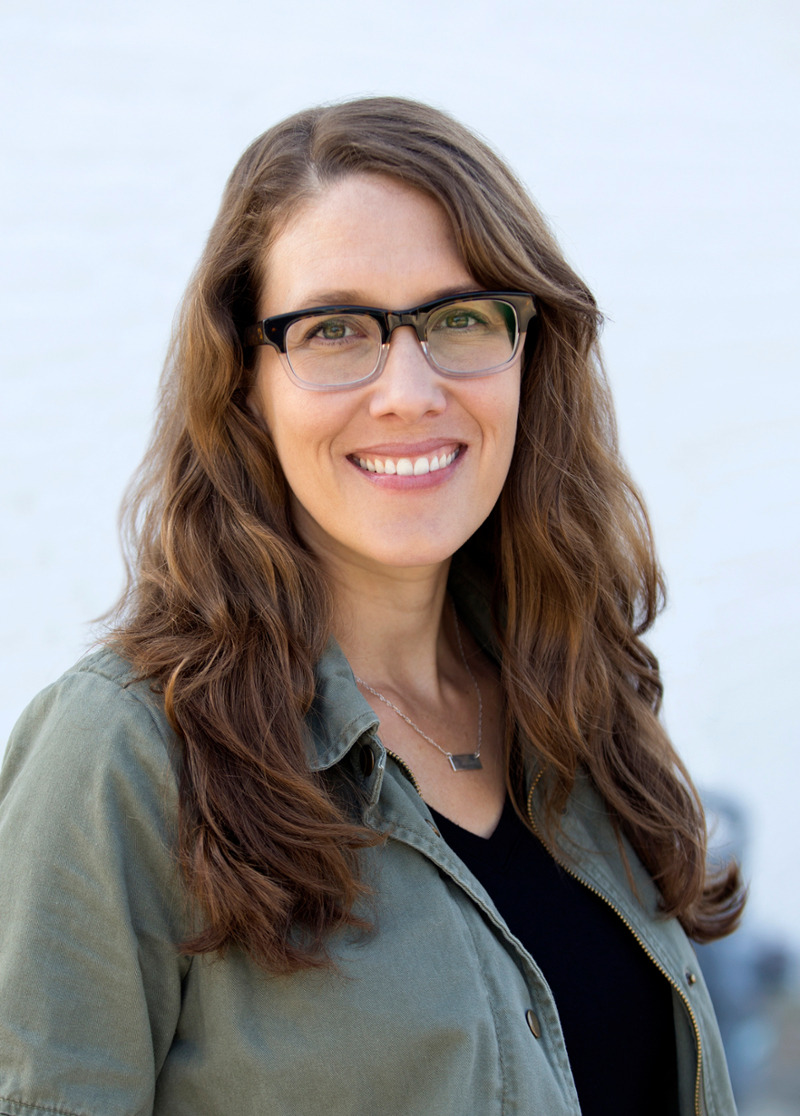
Julia Rendleman has amassed a considerable portfolio of professional publications since she began teaching in the School of Journalism and Advertising last year.
Her work has appeared in the New York Times, the Washington Post, ProPublica, The Kentucky Lantern and numerous non-profit publications.
Photojournalism has provided me with amazing opportunities and a front-seat to history,” Rendleman said. “It is an absolute privilege to be trusted to tell people's stories. Sometimes the stories are hard, they're sad - and that someone trusts me to get it right and share images from what might be the toughest day of their life - it's just a really precious thing. I hope I can get SIU journalism students excited about that awesome responsibility and privilege.”
One of Rendleman’s photos appeared on the front page of the New York Times in July, as part of the article “Abortion Networks Adapt to a Post-Roe World.”
“This summer, I met a woman flying across the country - from Minnesota to the East Coast - seeking an abortion. It was the first time she had ever flown. She allowed me into that day of her life,” Rendleman said.
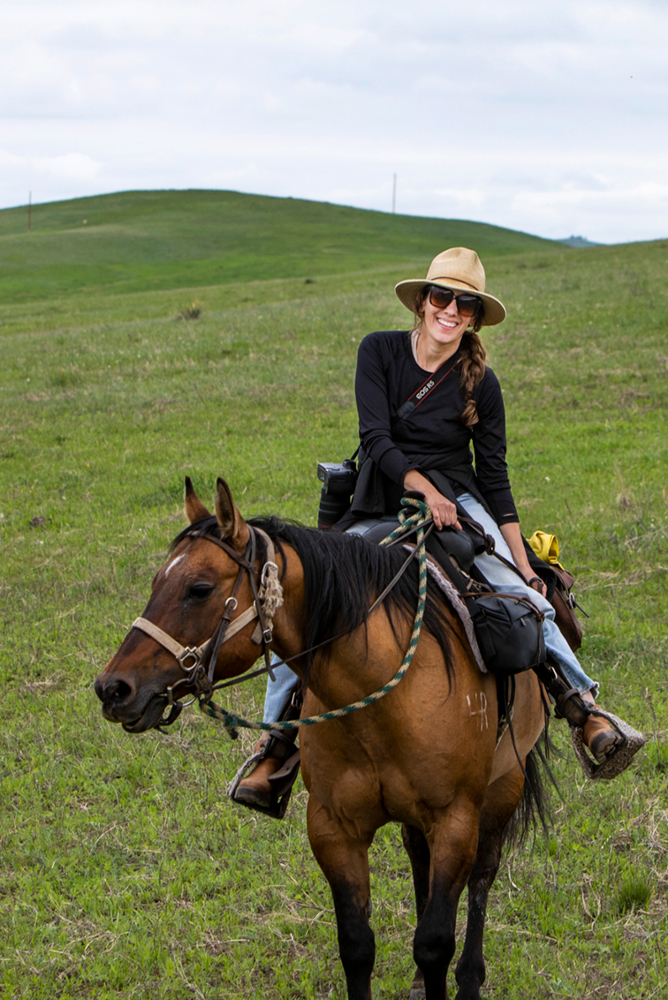 When she moved back to Illinois last year, she said, Rendleman knew the state would be “central to the shifting nature” of abortion care.
When she moved back to Illinois last year, she said, Rendleman knew the state would be “central to the shifting nature” of abortion care.
“As a storyteller, I was looking for unique ways to tell the story and came across Elevated Access, an Illinois-based non-profit organization connecting pilots with patients seeking abortions in states where the procedure is illegal: the pilots provide transportation for free,” she said.
Rendleman said it was an extremely hard assignment to photograph.
“Neither the patient, pilot nor location could be revealed in the images,” she said. “At the same time, my photographs should give readers a sense of what the cross-country journey (and first time the patient was ever on an airplane) looks and feels like and hopefully, gives them a greater understanding of the real-world result of Supreme Court decisions.”
Rendleman’s work also appeared on the front page of the Washington Post in August, 2022, in a story following up on a 1997 school shooting in Paducah Kentucky when the gunman became eligible for parole.
Photos by Rendleman were heavily featured in a ProPublica article about residents being displaced from HUD housing. The story, written by SoJA’s newly minted investigative journalism professor Molly Parker, told of the closure of four public housing projects in Cairo, Illinois.
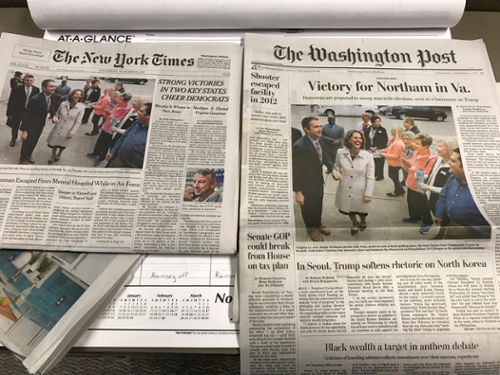 Not all of her assignments are so hard-hitting. Rendleman covered numerous topics for a large European news organization: Finland’s Helsingin Sanomat. One story took her to dude ranches in the American West, where she shot still photos and video, including drone footage.
Not all of her assignments are so hard-hitting. Rendleman covered numerous topics for a large European news organization: Finland’s Helsingin Sanomat. One story took her to dude ranches in the American West, where she shot still photos and video, including drone footage.
“I rode across Montana on horseback for a European outlet, documenting the best American cowboy experience money can buy,” Rendleman said. “In the spring, I went to south Florida for the same European outlet to find out what the American Spring Break experience was all about. I went several times to Mayfield, Kentucky to document the recovery (and use of recovery funds) after a tornado devastated the area in December, 2021. My camera brought me to all these places.”
Rendleman wants her students to be excited by the example of her work.
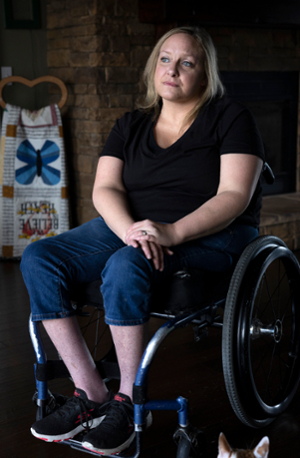 “I'm an SIU alum,” she said. “If I can do it, they can do it too.”
“I'm an SIU alum,” she said. “If I can do it, they can do it too.”
Rendleman also wants her students to know there’s no need to despair over the state of journalism and traditional news outlets.
“I think there are things to be excited about and stories to tell,” she said. “That's what I want to help Salukis do. I want them to come back in five years and tell me about their summers, riding horseback across the American West, or wherever their stories take them.”
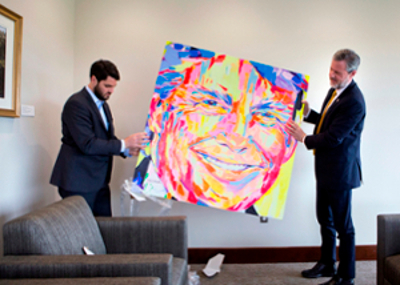
School of Architecture alum Thad Heckman giving Carbondale and the University a facelift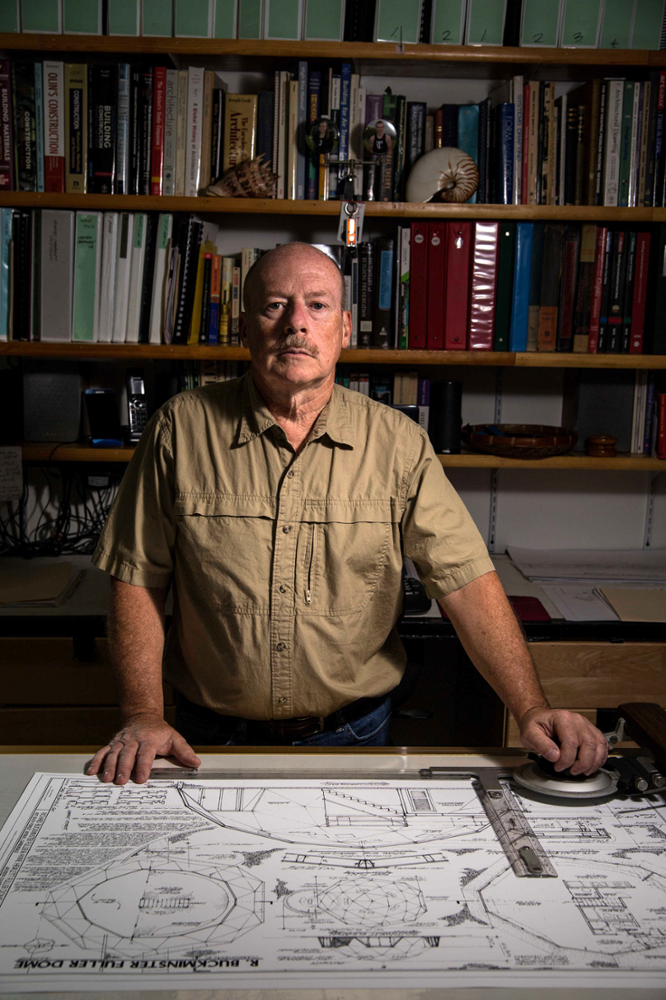
Call Thad Heckman a Renaissance man and he gets embarrassed. Sure, he’s an architect who has designed many buildings around Carbondale; he’s a car collector, a 3-cushion billiards player, a supporter ofcoral reefs and an amateur astronomer who happens to write some pretty nifty stories, but the word “Renaissance” makes him uncomfortable.
“I will leave that use up to your tactful discretion,” he said during a recent interview.
We chose Heckman for this CAM highlight because he is the designer of the $23 million Southern Illinois Multimodel Station (SIMMS), a multi-use transit hub set to open in early 2025. But, what we discovered in the process is that he is also the designer of the just-announced Tedrick Welcome Center at SIU. Plus, he’s doing a new 3-D printed building that will house a new Visitor’s Center adjacent to the R. Buckminster Fuller Dome Homehere in Carbondale.
With SIMMS, there’s a lot to coordinate. The station will house the following:
Transportation related opportunities:
- Amtrak train service
- 5 area local transit services that will serve 28 counties
- Southern Illinois University’s Saluki Express transit service
- Greyhound
- Electric Scooters
- Long and short-term bike storage
- Non-Transportation Services:
- Southern Illinois University Welcome Center
- Carbondale Tourism Office
- Co-Working Spaces
- Man-Tra-Con Workforce Program Office
SIMMS project manager Mark Bollmann said, “The Floor Plan consists primarily of the transportation related functions – namely, Amtrak, the local transit providers, various Ride-Share programs, as well as a Greyhound bus service office. Additional space off the main concourse will accommodate multi-purpose spaces that can serve future retail, commercial, or community needs. Public use facilities as well as mechanical and support spaces are included in the design.”
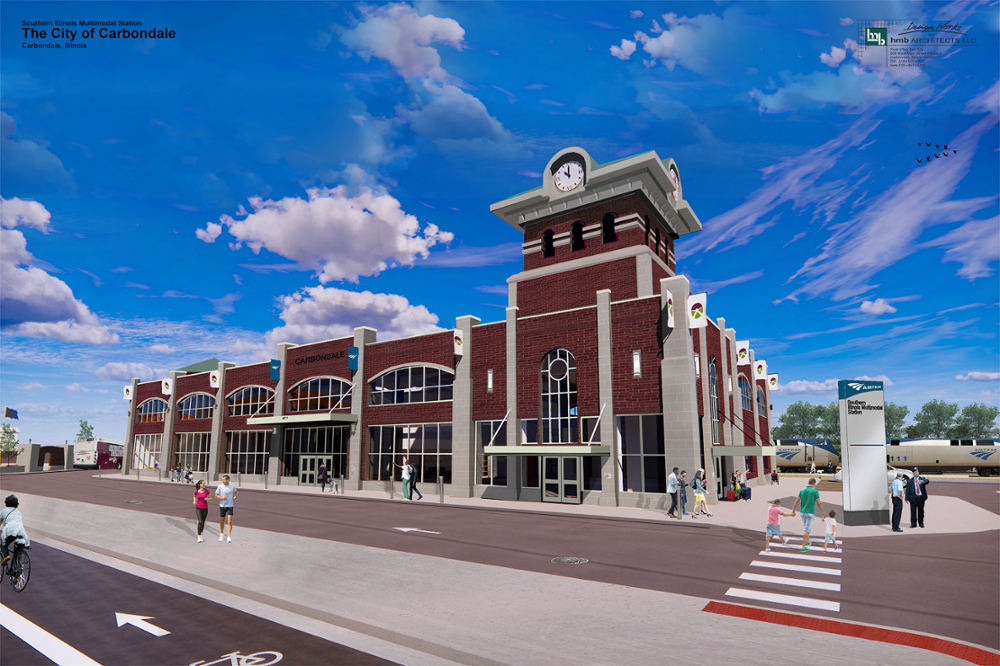 Heckman considered going with a contemporary design for SIMMS but realized a more historical approach seemed more fitting.
Heckman considered going with a contemporary design for SIMMS but realized a more historical approach seemed more fitting.
“The traditional stations still look great no matter what century they're in,” he said. …and that meant SIMMS needed to have a tower.
“So, I did the tower. [It] is lined up on the centerline of Elm Street. We don't know how Elm Street is going to evolve 30 to 60 years from now and to just glance down the street at the tower beyond for the duration will place-mark the new SIMMS for years to come.
For that reason, Heckman considers the station a 100-year building, meaning it has to be functional and aesthetically pleasing for a century or more.
“When I design, I want to try to be 5000 feet up looking at the broad picture and ‘how's this going to pass down through the years, while still also satisfying ridership and the usual day-to-day activities. It's a lot of fun and challenging,” he said, involving the city, Amtrak and allied partners with the entire design team to determine the design solutions.
Heckman thinks a lot about the broad picture even in his free time. When he was a pre-schooler, he wanted to be an architect or a marine biologist. His studio has a 400-gallon coral reef aquarium and a large shell collection started when he was five years old - and he gives a lot of thought to how the world’s wild reefs can be protected.
“The coral reefs are certainly in trouble, and I even thought of an organization I call Inland Seas, in which we band together, all the advanced reef keepers like myself, organized to cultivate corals for restocking the wild,” he said.
For fun, Heckman plays billiards. But don’t confuse that with pool.
“Billiards has no pockets and you play with three balls and it's an old game, much older than pool,” he said. For relaxation, I play in my studio on the table that I learned on and purchased from Gatsby’s Billiards way back when it closed down.
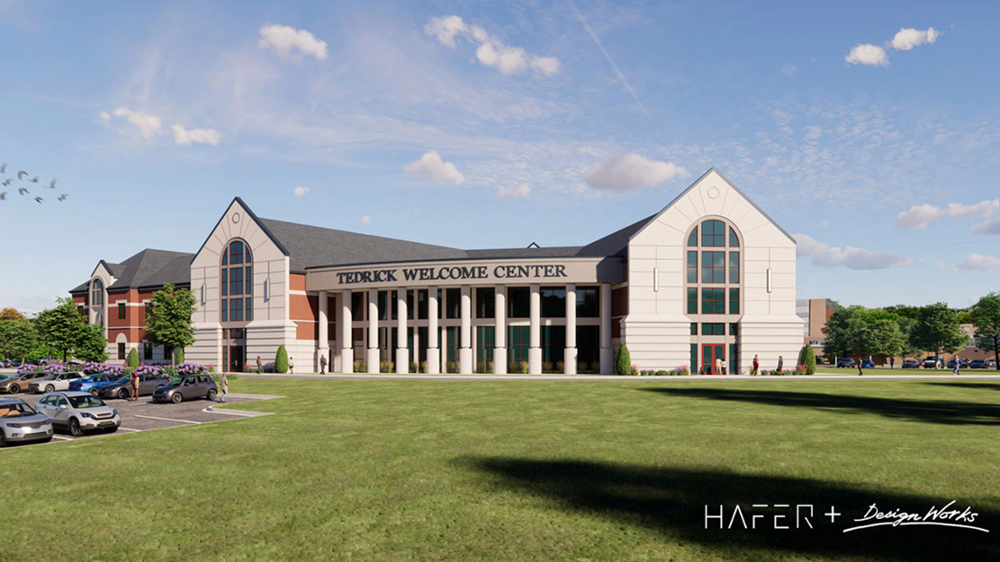 Heckman said he’d like more time to devote to collecting heirloom cars. He’s particularly a fan of his first car – a ’67 Oldsmobile Toronado, and the car it emulates, the old Cord from his stepfather. Made in Auburn, Indiana, his ’36 Cord 810 has one very specific part that may make it one of only three produced, but he hasn’t had a chance to research it thoroughly yet.
Heckman said he’d like more time to devote to collecting heirloom cars. He’s particularly a fan of his first car – a ’67 Oldsmobile Toronado, and the car it emulates, the old Cord from his stepfather. Made in Auburn, Indiana, his ’36 Cord 810 has one very specific part that may make it one of only three produced, but he hasn’t had a chance to research it thoroughly yet.
“So, I have a little mystery, a little bit of automotive historical mystery,” he said.
Heckman said talking about one of his old jobs can make car collectors cry; “I used to crush cars”.
“Some folks, upon graduating high school, will perhaps go to Europe, or the military or the Peace Corps as their internship on life,” he said. “However, I consider my internship in life was working through college and for the two years after graduating college as the Crushing Foreman in a salvage company (aka: junk yard). I learned about heavy machinery as the operator of an articulating loader, a very valuable experience that I would prefer not to do again.”
Heckman is also a published author. He has written everything from short tales of his high school senior trip escapade sneaking into the inner sanctum of the Chicago Playboy Building’s private club (and promptly being kicked out) to attending a ‘run’ with professional astronomers at the Mt. Palomar Observatory, to a serious work on the history of the Dome Home. Titled “Bucky’s Dome” with co-author Cary O’Dell, Mr. Heckman less formally calls it the “dome tome.”
His love affair with the geometry of the dome also factored into his SIMMS design.
Bollman said, “Thad brought a traditional train station design which fits in with the historic look of the downtown area. He also incorporated some of the SIU and R. Buckminster Fuller influences.”
Bollman has been very pleased with Heckman’s work on SIMMS.
“He is 100% vested in the project and is in constant contact with me during the construction phase. Thad, and the entiredesign team, takes a very personal hands-on approach,” he said.
Heckman, who just turned 67, is certainly leaving his mark on the Carbondale community and at SIU. He is a class of ’79 alum of the Design Department and has taught Architecture at the university for more than two decades. Though he retired in 2017, it “didn’t stick” and he’s once again in the classroom as a Senior Lecturer.
“I tell my students…that the architect is also sometimes somewhat like the orchestra leader, that you're listening to all the instruments. In this case, you've got Amtrak and you've got mechanical concerns, and you've got all this stuffaround you going on, and somebody's got to, you know, ask the violin section to pull up,.…and get all of this in concert on where we're heading with the design.” In the end, you hope for a successful composition.
Costume Shop Manager Tells Stories Through Garments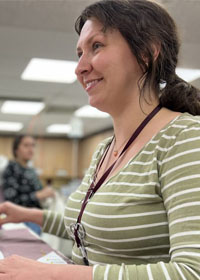
Jane Pivovarnik was “gobsmacked” and “totally starstruck” on her first tour of the SIU Carbondale campus in the early 2000s, when she met “cool older students” who were creating a fashion line and studying fashion history. She had been studying at SIU Edwardsville with an undeclared major and felt a little rudderless. It was her sister - who was attending SIU Carbondale - who mentioned the “fashion department” while the sisters toured a British museum looking at clothing and other fashion artifacts.
Pivovarnik knew she loved art, history and anthropology, and “making things,” and realized the openness of the fashion program would allow her to study a lot of different subjects where she could scratch her curiosity itch while still getting her fashion degree. She became a Saluki and is now the costume shop manager for SIU’s theater program.
Studying under fashion studies professor Laura Kidd and others, she eventually did create her own fashion line which she presented on the runway in spring 2009, the semester in which she graduated. Pivovarnik was back at a crossroads: She was interested in graduate school and interested in museum studies, specifically curation and preservation of clothing and textiles.
She had begun looking at various schools away from Carbondale, but a bicycle accident in which she broke her pelvis derailed her grad school search for a while. With a need to concentrate on her physical recovery, she found herself with a diploma and no plans for what was next.
Pivovarnik considered staying at SIU as a viable option. Not knowing what SIU grad programs fit her interests, she went to the website and scrolled through the degrees, and in June, “ready to move back to my parents’ house,” she found costume design in the then Department of Theater and wrote to the graduate advisor. She quickly got her paperwork in and took a tour.
The department was deep in its season of McLeod Summer Playhouse, and it was “chaotic.” But in the costume shop, as an actress was getting fitted for a costume, Pivovarnik almost couldn’t help herself and, using her fashion studies technology knowledge, jumped in to help.
What happened next? She was hired to work in the costume shop for that summer, where she says, “I sewed my brains out” for a production of Sondheim’s “Into the Woods.” She found a new home in the basement costume shop. That fall, she began her Master of Fine Arts graduate career in costume design.
Pivovarnik found the transition from fashion studies into costume design almost seamless because both incorporate visual storytelling. The former is the story with garments in a fashion line, and in the latter, you’re telling the story of the play with the garments of the characters.
She especially found it exciting to design for new plays, plays that were written in the MFA playwrighting program, because she was working almost side-by-side with the playwright to visualize the world that the written characters were living in.
In 2012, Jane “hit the ground running” by moving to California for a costume shop job at the Pacific Conservatory Theater. She was there for about two years before taking another costume shop job at University of Illinois in Urbana-Champaign, which brought her much closer to her family.
After a move back to the West Coast, specifically Portland, Oregon, “for love”, she and that love moved back to Carbondale for his job. Pivovarnik continued working in the professional theater, doing contract work remotely. In 2019, she was hired by SIU’s theater department as an assistant professor of practice and stepped into the role of costume shop supervisor. While she teaches formal classes each semester, most of her teaching is actually in the shop, supervising students as they work on the design and construction of costumes for the School of Theater and Dance’s productions.
Pivovarnik has always been drawn to teaching, coming from a long line of teachers — her mother and aunt were both teachers. When working with students, she loves seeing the “lightbulbs going off in their head,” hoping that they leave interactions with her with “their world being bigger.” She cherishes encouraging her students, nurturing the incubation of design ideas and seeing their ideas come to life. She loves being “on their team” through this process. Being an artist is “really scary, putting your ideas out there,” so she creates an atmosphere of support in the costume shop, knowing that her students may have failures, but they will learn from those failures.
Pivovarnik knows she will remain in Carbondale for a long time — she and her husband are building a family here, and they love the region’s beauty and the quirkiness of the people. She hopes to design more, especially with dance, as the school expands its dance program and performances.
She also knows she will never be far from a classroom or teaching. “It’s in my blood,” she says, and she can’t stay away from learning — for herself and others.
Odenkirk Shares Wisdom with SIU Students During Return Visit to Campus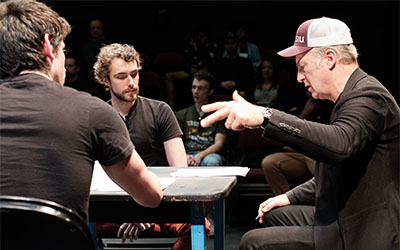
In April, Bob Odenkirk, a 1984 SIU Carbondale graduate turned actor, comedian, filmmaker and author, returned to his alma mater for two main purposes – to receive the bachelor’s degree in radio-television that he earned as a student and an honorary doctorate and to interact with students and faculty within the College of Arts and Media.
Odenkirk’s career includes writing for “Saturday Night Live,” where he helped create beloved sketches such as “Da Bears” and “Matt Foley, Motivational Speaker”; co-creating the HBO sketch comedy show “Mr. Show with Bob and David,” and portraying Saul Goodman on AMC’s “Breaking Bad” and “Better Call Saul.” Most recently, he has released his children’s book “Zilot & Other Important Rhymes,” illustrated by his daughter, Erin Odenkirk.
Nearly 2,000 people came to SIU’s Banterra Center on April 3 for Odenkirk’s degree ceremony and Q&A session. Earlier in the day, Odenkirk met with two CAM classes during his visit. The first was in the Northlight Room of the Communications Building, and the second was in the Christian H. Moe Theater.
“SIU offered me the freedom to make stuff and do stuff,” he said. “If you don’t believe you can do it, you won’t try. You have to take a risk.”
Throughout the day, he spoke fondly of his time at SIU, particularly his experience at the student radio station WIDB. He imparted wisdom, shared stories and advice, and answered numerous questions.
“You can’t guarantee excellence,” he told the nearly 100 students and faculty in the Northlight Room. “You can just do your best all of the time.”
During his session in Moe Theater, he worked with multiple pairs of students as they performed various scenes. He offered the students cues and notes on everything from how to conceptualize the scene as a whole to how to deliver particular words.
“It means a lot to me that someone whose time is so valuable made an effort to work with us in our creative space,” said Uriel Achilleus, one of the students who worked with Odenkirk in Moe Theater. “Mr. Odenkirk made it clear that he was working through his own creative process with us; he showed us what goes through his mind when analyzing a scene and portraying a character. It feels like a once-in-a-lifetime chance to get to work with someone as successful and experienced as he is.”
Odenkirk also made it a priority to stop by the former location of the WIDB radio station, which is now recognized by a plaque behind the towers on East Campus.
“I thrived here, and I always think of it fondly,” he said.
New Tools and Tech Fine-Tune the School of Music Audio Lab
Students in CAM’s School of Music are excited about an upgraded audio lab that provides extensive new equipment and makes homework easier.
“It’s nice to have [this lab] because I know music technology is becoming a big thing,” sophomore Mckenzie Rider said…“Using stuff like MuseScore, and there are other programs, like Sibelius, and stuff like that to write music and to be creative. It’s really nice to have the access to that here as a music student.”
SoM Director Dick Kelley said the space is set apart from other computer labs around the university because of music-specific software, including Ableton, ProTools, Logic and music-notation programs. Then there’s the hardware.
 “The college got a little bit of money to put together to buy these Mac Minis, we got new monitors, there's MIDI keyboards that are also functional with all the digital audio workstation, station programs. And then there's also connectivity so the students can bring in their own equipment, and there's just plug it in through USB. They can monitor everything with headphones,” Kelley said.
“The college got a little bit of money to put together to buy these Mac Minis, we got new monitors, there's MIDI keyboards that are also functional with all the digital audio workstation, station programs. And then there's also connectivity so the students can bring in their own equipment, and there's just plug it in through USB. They can monitor everything with headphones,” Kelley said.
Up next, a big TV up front which will allow everything to be interactive via Zoom.
“So, if a student…is working on a project, and everybody wants to see it, it'll be up there on the big projector. That's really nice,” Kelley said.
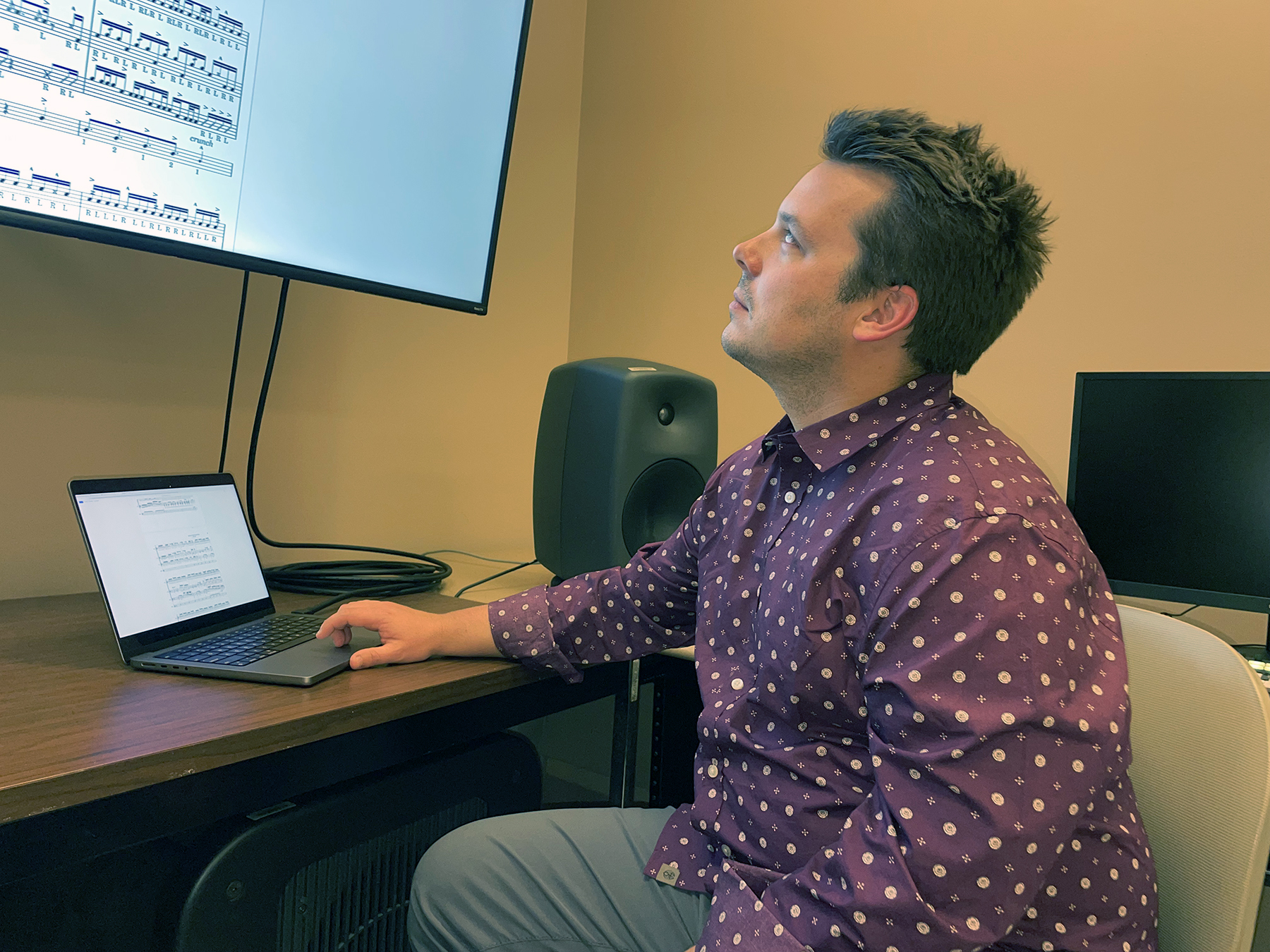 The school has also upgraded its Center for Experimental Music in the Altgeld basement.
The school has also upgraded its Center for Experimental Music in the Altgeld basement.
“There's three rooms down there, that we did the same thing, but kind of on steroids. We got like the really top of the line Mac Minis. And then those also have reference monitoring speakers, so like studio quality monitoring speakers, and all kinds of surface controllers, MIDI keyboards, and a lot more software,” Kelley said.
All the new goodies were possible with help from an unnamed Alumni Foundation donor. That person will be identified later, after even more is done.
Kelley said the average student traffic in the lab is constantly growing.
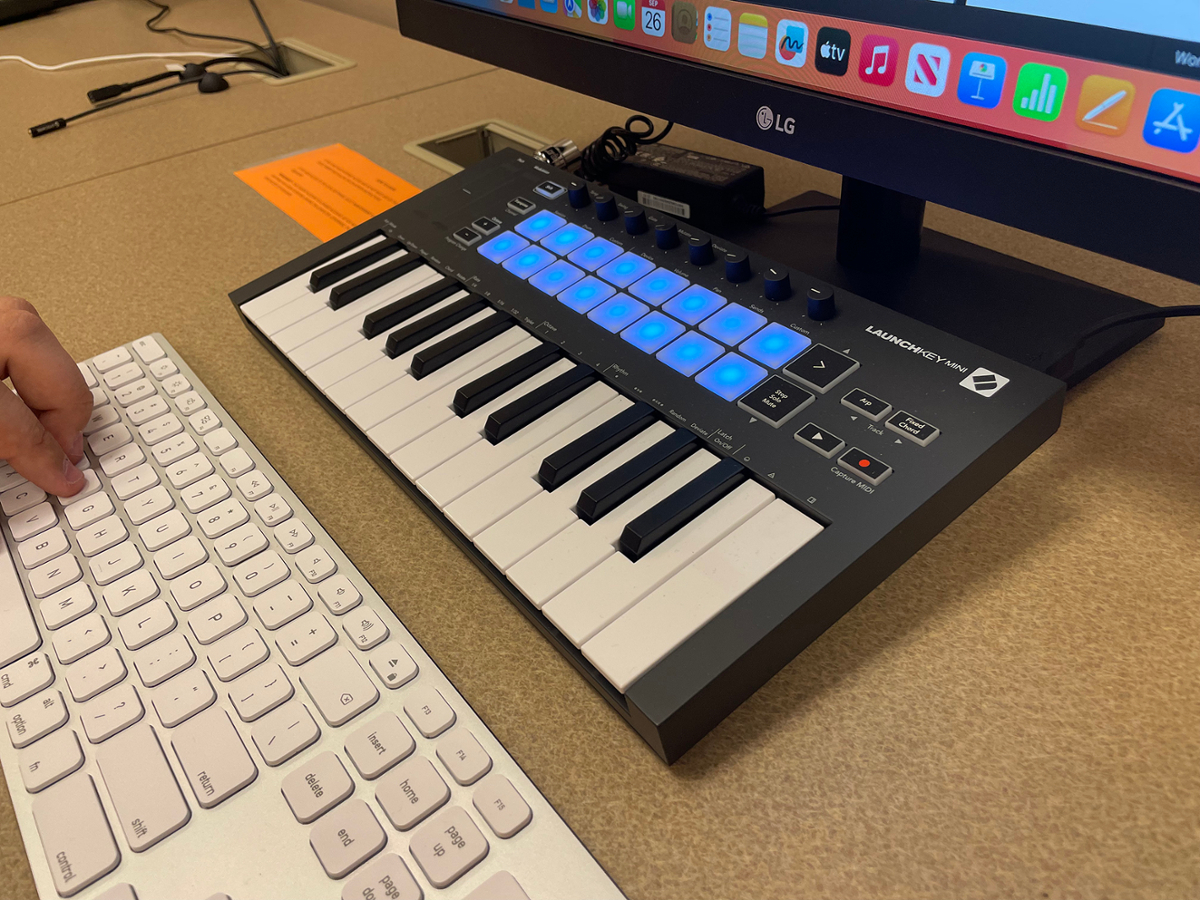 Since it's brand new, I think a lot of students aren't used to using it yet. But we've started to see it really uptick as the semester has gone on,” Kelley said. “So, like the first week, it was like, ‘okay, there's three or four people filtering in here and there.’ But yesterday, I walked by middle of the afternoon, and there was like nine students sitting in there. So, I think as more students get more comfortable using it and realize it's there, it's going to continue to grow.”
Since it's brand new, I think a lot of students aren't used to using it yet. But we've started to see it really uptick as the semester has gone on,” Kelley said. “So, like the first week, it was like, ‘okay, there's three or four people filtering in here and there.’ But yesterday, I walked by middle of the afternoon, and there was like nine students sitting in there. So, I think as more students get more comfortable using it and realize it's there, it's going to continue to grow.”
Freshman Riley Klevorn is one of the students taking advantage of the lab.
“We just did this project that we were writing a drum cadence. So he [Associate Professor of Practice Chris Butler] gave us a few days to write it, so I just spend the last few days in here, just working on that, which is really convenient considering that is where my classes are or I can just come here when I have free time.” Klevorn said.
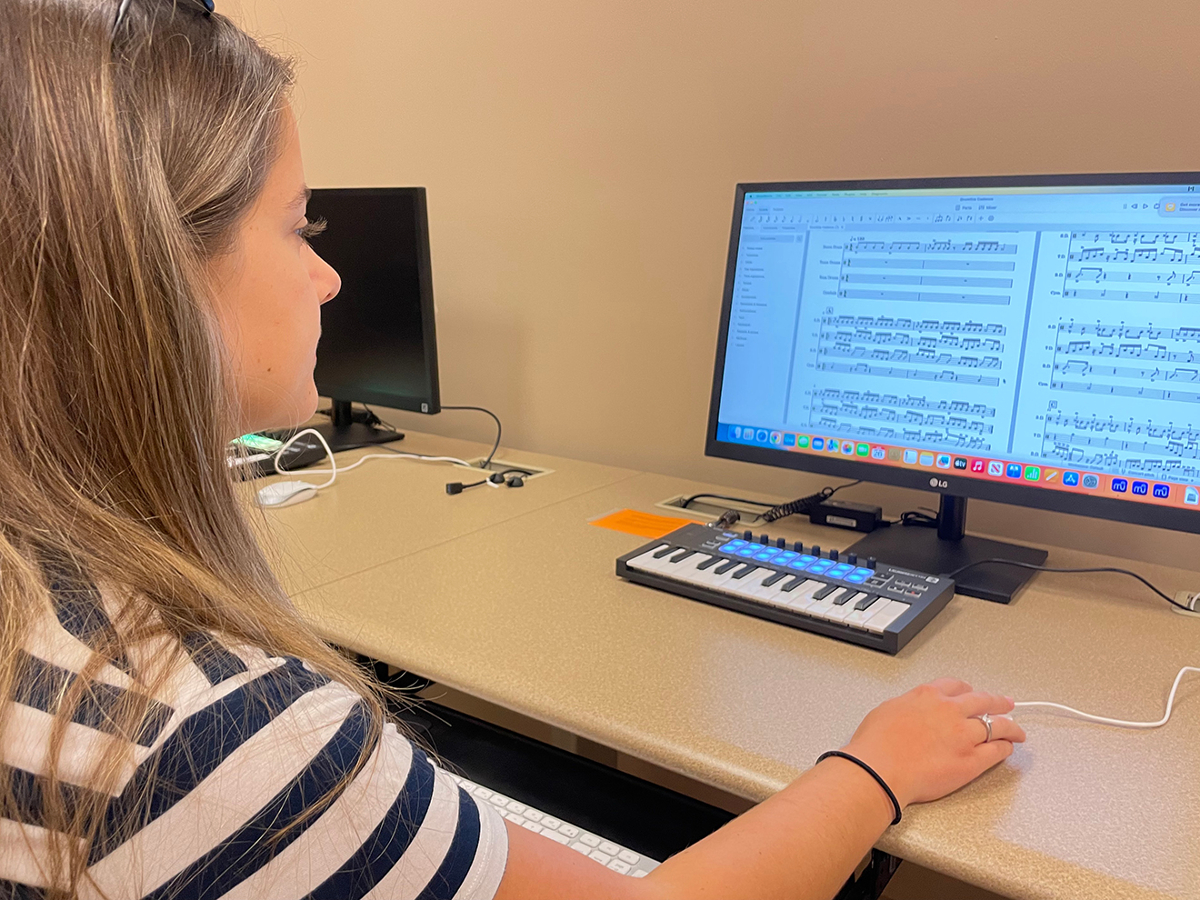 Freshman Blaine Mayo has used the lab “three of four times.”
Freshman Blaine Mayo has used the lab “three of four times.”
“If I have a break, there’s no reason for me not to come in here,” Mayo said.
Kelley said the lab is far from completed, with plans to get interfaces that will allow students to bring in a microphone and plug in midi instruments like guitars, and have it workable on screen.”
“We're currently designing a Music Technology degree and program,” Kelley said. I think once that gets implemented, we'll continue to expand from there.”
Support CAM
CAM needs your help to provide SIU students with the best experience possible. Please consider making a gift today by clicking the button below or by contacting Lisa Knight, director of development, at 618-889-4858 (office), 618-453-4719 (cell) or lisak@foundation.siu.edu.
